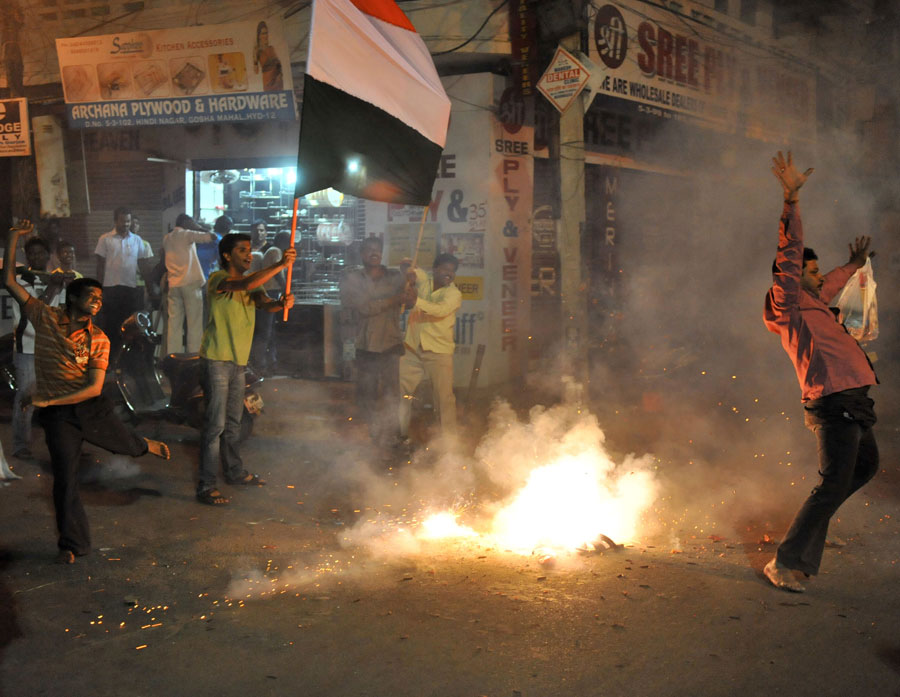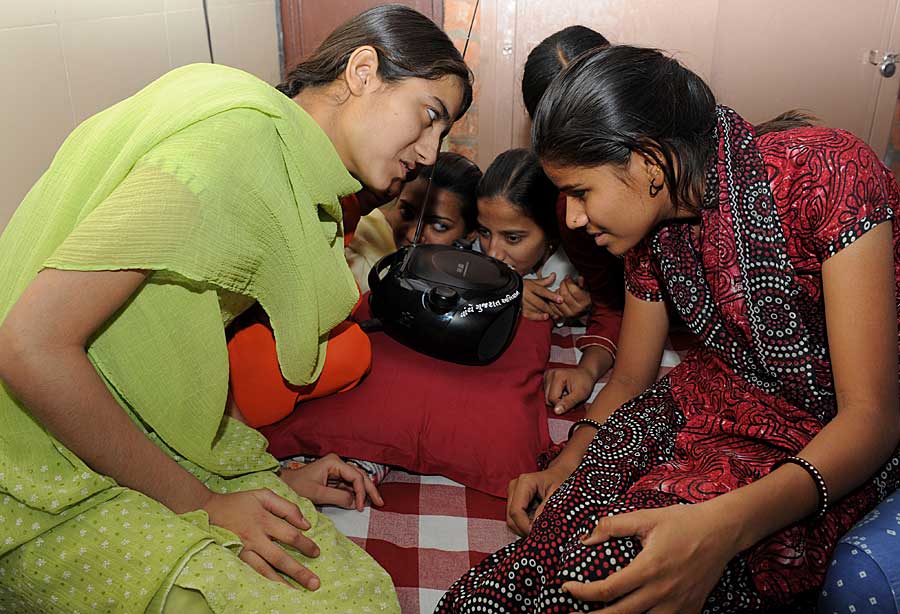 |
| Celebration in the Streets of Ahmedabad after a famous victory |
 |
| Fireworks in Hyderabad |
 |
| Visually impaired women following the commentary on a transistor radio |
 |
| I Bleed Blue |
- "A cricket match between India and Pakistan is a war without bullets".
- " If you took a survey of Indians and Pakistanis today, they will not be clear whether it is more important to defeat your neighbor in cricket or war. Quite likely, a majority will prefer victory in cricket."
- "Indian and Pakistani cricket traditions are products of the same soil, but over the decades, India became a nation of great batsmen while Pakistan became a nation of great bowlers. How and why this happened is a mystery, although theories abound and the topic is a staple of Asian cricket discussions."
- "20% of the planet can go back to what they were doing now"
Here are some links to articles and clips about the match:
1. NPR: Cricket Diplomacy
2. NPR Historic India Pakistan Match
3. ABC News: The Thrilla in Mohali
4. Andy Zaltzman's satire
5. Saad Shafqat: The ultimate cricket contest (I really liked this one)
6. Sambit Bal: Only a match in Mohali (and this one)
7. BBC: The joy and despair after an epic
8. BBC: Slideshow - Great pic "I Bleed Blue"
9. BBC: Video - the mother of all epic battles
10.ESPN Outside the lines: Why you should care about cricket by Wright Thomson (Thanks to Ravi Desai for pointing this one out).
11. Sidin Vadukut: Thrilling account of an Indian in Switzerland trying to watch The Match - Kindle browser, stolen WiFi, dying batteries and all.



